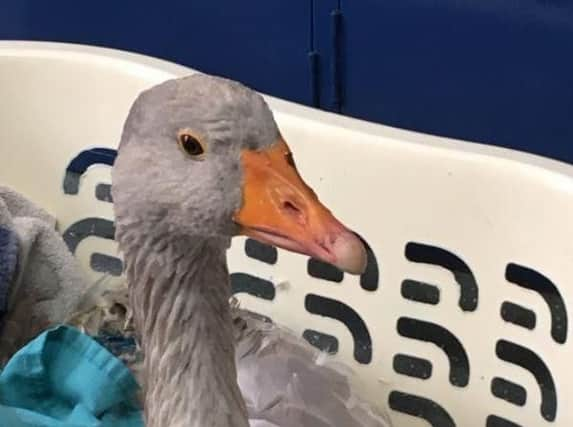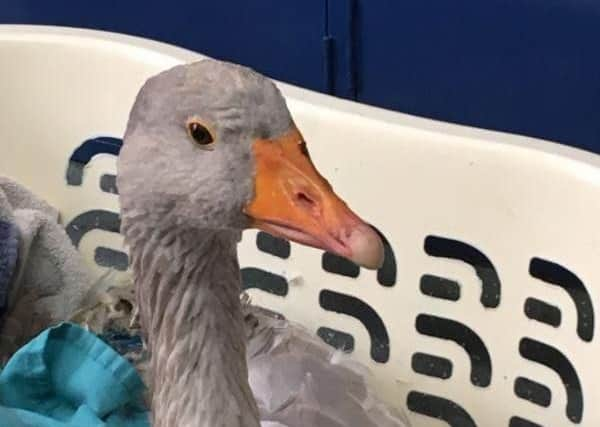Yorkshire vet Julian Norton takes on a goose, loose, about the lane


It sounded more interesting than the two dogs with diarrhoea, the two Labradors with conjunctivitis and the couple of cats in need of their annual vaccinations. To see one goose was unusual, but to see two of these curious creatures was cause to make a call to my cameraman.
“Ross, there are two geese coming to see me later this morning. They have some injuries, but I don’t know a lot more than that,” I explained to Ross the cameraman, who was preparing to head out to follow up some cattle from a previous story.
Advertisement
Hide AdAdvertisement
Hide Ad

He quickly changed his plans and rearranged his morning to come and meet the geese. And it was a good thing he did, because the pair of birds, a female and gander, were soon sitting calmly and serenely in the waiting room. One was in a cardboard box, wearing one of those close-fitting outfits that babies wear. The other was in a laundry basket, with a pillow case over his head.
I called them in, or rather I called in their owner and realised I would need to help carry them into the consult room. It transpired that the pair of terriers who lived on the farm, employed mainly to control the rat population, had taken a liking to (or rather, a vendetta against) the geese. The two of them had made an unfortunate attack on the birds.
On this occasion, the birds had come off worse. Most dogs would steer well clear of a couple of belligerent geese, but the pair of Borders had obviously egged one another on. The result was some nasty injuries to both goose and gander. The terriers, on the other hand, were unscathed but (quite literally) in the dog-house.
I examined the male goose first, carefully removing the pillowcase from his head. It wasn’t so much that he was a hostage, being smuggled away from the scene by the goose police – rather, a pillow case over the head keeps a bird calm when in unfamiliar surroundings – a car journey to the vets, for example – and it also keeps the snappy beak away from farmer’s and vet’s fingers. A large sock also works well.
Advertisement
Hide AdAdvertisement
Hide AdHis handsome face showed not a trace of illness as he looked around, checking out things to peck at. The large wound, which was obvious on his back, was where he had born the brunt of the terrier attack. The female bird had similar injuries.
There was a lot of bruising, damage to the skin and some tissue necrosis, common with crushing injuries. Worst of all, fly eggs and little maggots had appeared in the dead and damaged tissue.
It took a painstaking twenty minutes to rid Mr and Mrs Goose of all the maggots we could find. It is a grim, but strangely satisfying job, and all vets have their favoured technique. My personal favourite is using forceps to get the obvious ones. I then spray blue spray into the wound.
The horrible grubs soon panic and emerge to the surface, desperate for air. The wounds were soon clean and after a couple of injections, both goose and gander had a much more favourable prognosis.
Advertisement
Hide AdAdvertisement
Hide AdAs I helped carry them to the car, the gander, whose lidless box I was carrying, made a bid for freedom. Luckily I managed to grab him, but as the consequences of a successful escape ran through my mind, the words of a Mr Men book from my childhood appeared. “There’s a goose, loose in the lane!”